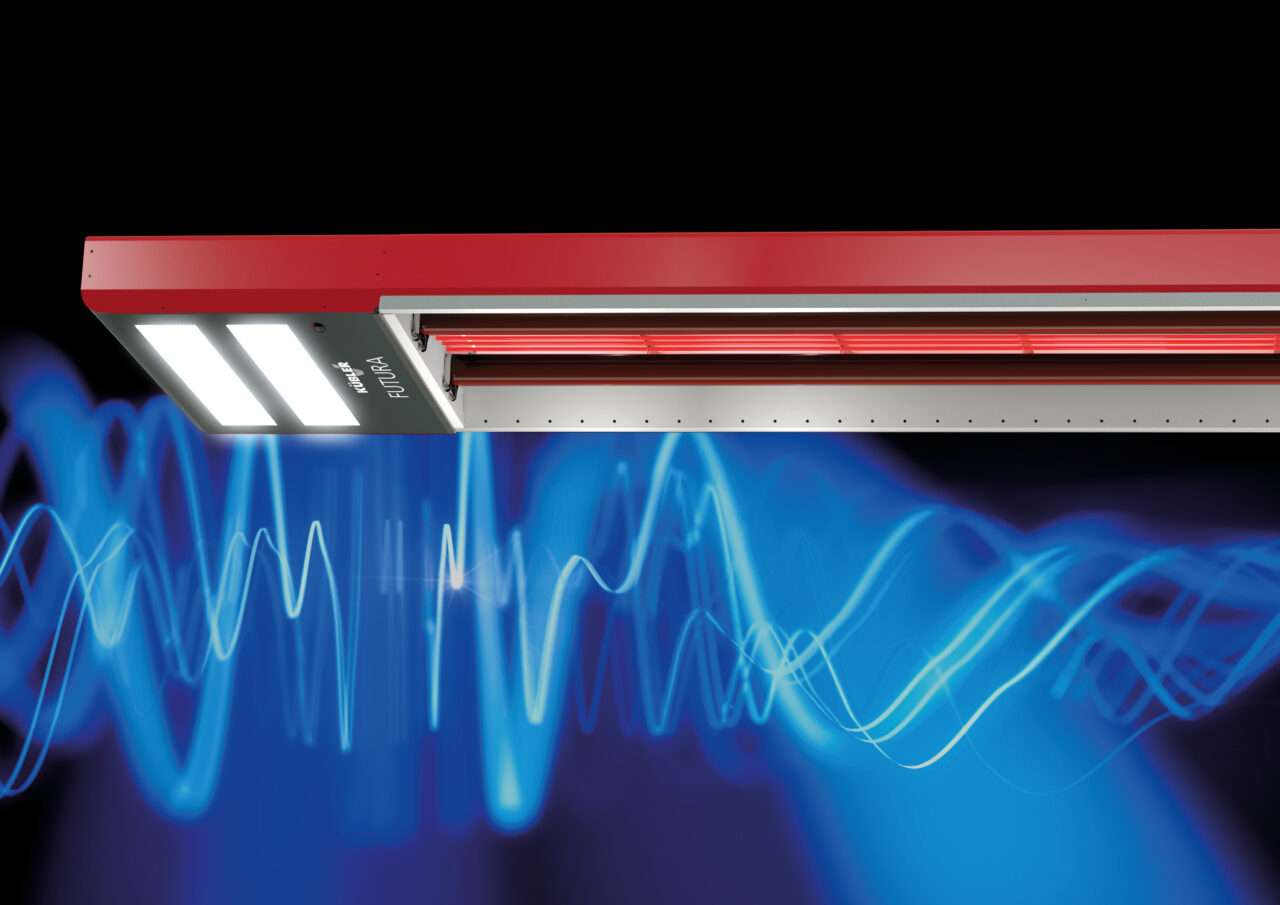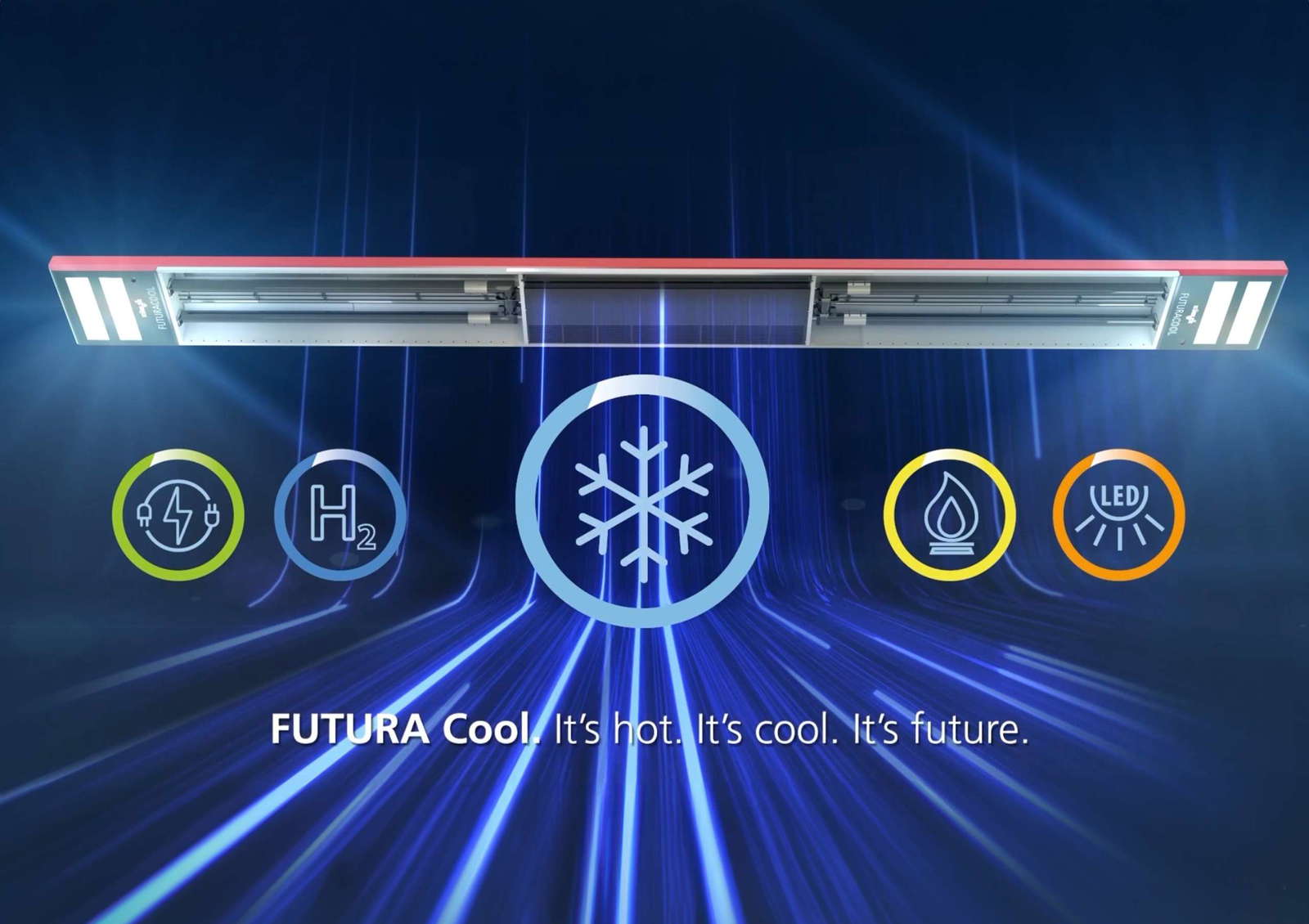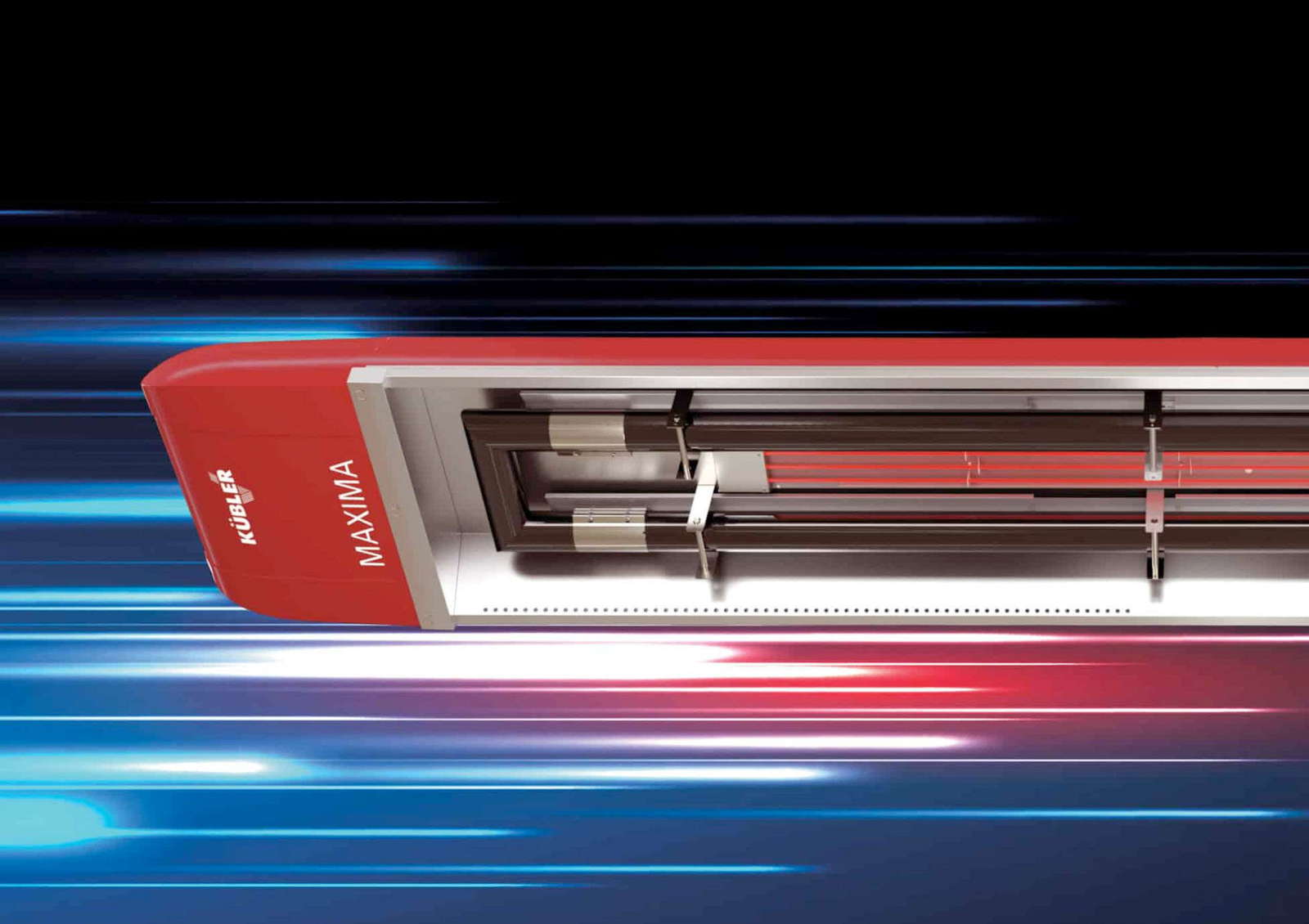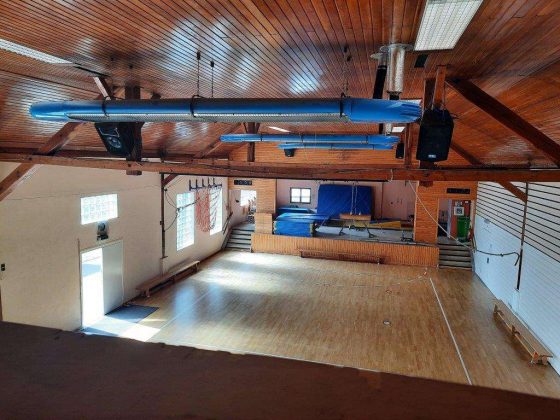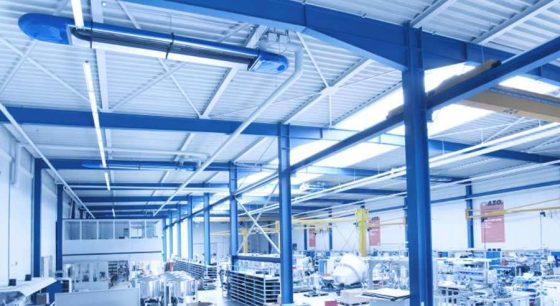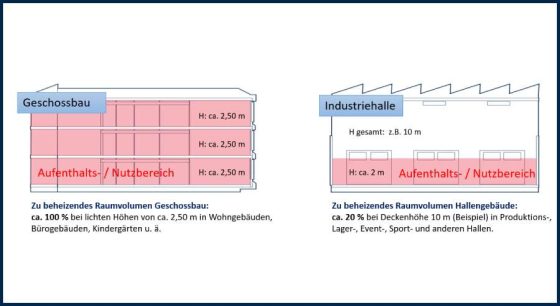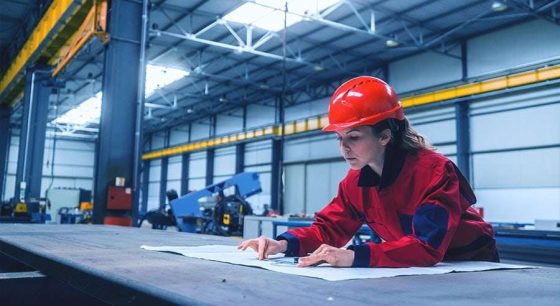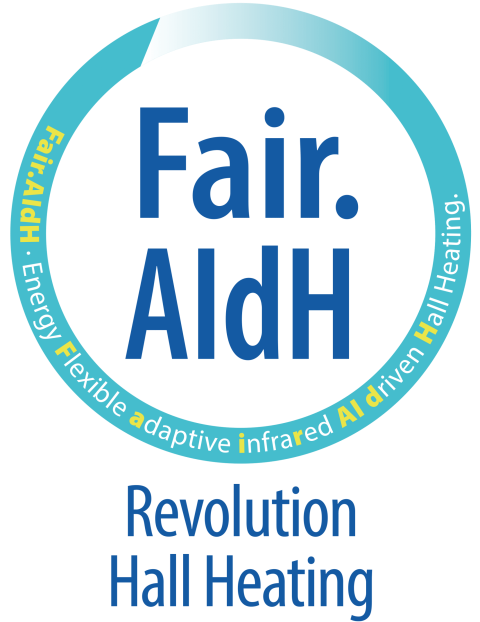Don't worry about the heating law for indoor heating systems!
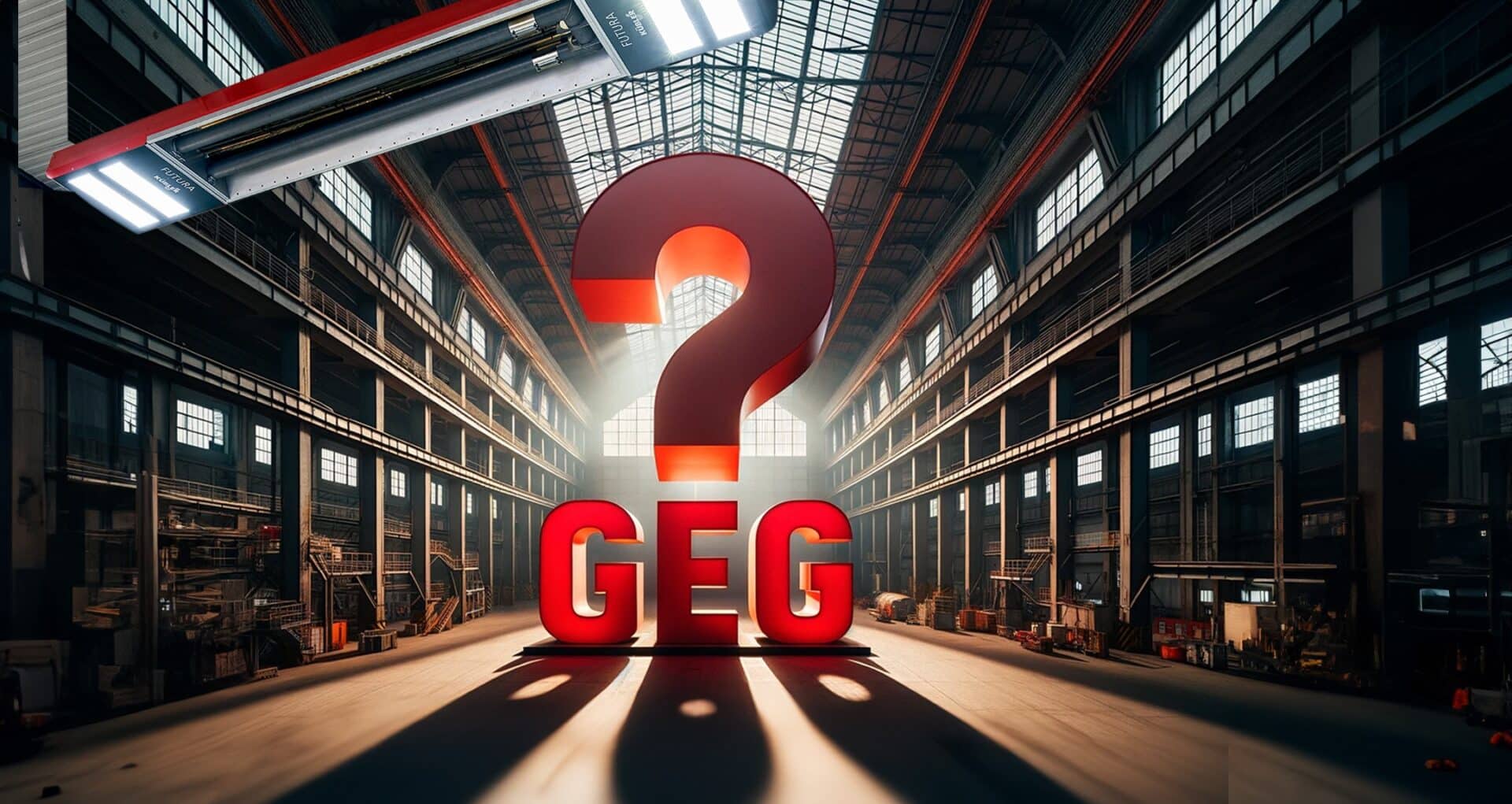
Heating industrial halls in compliance with GEG. Now. And after 2024.
The most important things first
- Highly efficient decentralized infrared heaters continue to be the hall heating technology of choice. This also applies after the GEG amendment comes into force. As innovative multi-energy or e-hybrid systems, they can meet all requirements for the use of renewable energies.
- The path to climate-neutral heating is a gradual one. The legislator has provided for generous transition periods, technological openness and pragmatic, affordable regulations in the GEG.
- Until June 30, 2026 (or June 30, 2028), you can renovate your existing system cost-effectively without additional requirements and convert it to future-oriented, energy-saving infrared technology.
I What applies in general?
What is the GEG?
The Building Energy Act (GEG) - also known as the Heating Act - is a central component of the German heating transition. It stipulates the energy requirements that heated and air-conditioned buildings must meet. The law came into force on November 1, 2020 and replaces the Energy Saving Act (EnEG), Energy Saving Ordinance (EnEV) and Renewable Energies Heat Act (EEWärmeG). A slight change was made on January 1, 2023 (reduction of the permissible annual primary energy requirement in new buildings from the previous 75 percent of the reference building to 55 percent). A comprehensive amendment to the GEG was passed in the Bundestag on September 8, 2023 after lengthy and controversial debates.
With the new Heating Act, the German government is initiating the switch to climate-friendly heating systems. The aim of the amendment is to accelerate the heating transition in Germany. At the same time, the aim is to reduce dependence on fossil fuel imports.
What are the requirements of the new GEG?
The Heating Act places new demands on heating and air conditioning technology in terms of:
- Use of renewable energies (RE)
- Energy efficiency
The switch to a climate-friendly heat supply should take place gradually, be plannable in the medium to long term and be cost-effective and stable. The aim is to end the use of fossil fuels in buildings by 2045 at the latest and achieve climate neutrality.
Who is affected by the new heating law?
The new GEG applies to almost all buildings that are heated or air-conditioned. In addition to residential buildings, this also includes non-residential buildings such as halls. Exceptions are
- Greenhouses
- Stable facilities
- Tents
- et al.
When does the Heating Act come into force - what transitional periods apply?
Different deadlines apply to the fundamental goal of only installing heating systems based on 65% renewable energy wherever possible. It is important to note that the deadline of 01.01.2024 applies to only new buildings in new development areas. For all others:
- 30.06.2026 - New buildings outside new development areas and for existing buildings in large cities (more than 100,000 inhabitants)
- 30.06.2028 - New buildings outside new development areas and for existing buildings in smaller towns
The previous GEG will remain in force until December 31, 2023, including the amendments that have been in force since January 1, 2023. These include, in particular, the reduction of the permissible annual primary energy demand in new buildings to 55% of the reference building and the introduction of a primary energy factor for electricity for the operation of large heat pumps connected to the heating grid (1.2 for the non-renewable share; Section 22 (2) sentence 3).
What do you need to know about municipal heat planning?
The German government has linked the Heating Act to municipal heating planning and set deadlines for this. For example, municipalities must determine by mid-2028 at the latest (large cities by mid-2026) where heating networks or climate-neutral gas networks (e.g. hydrogen) will be expanded in the coming years. The heating plan is intended to help with the decision for a new heating technology and can influence the above-mentioned deadlines for the entry into force of the GEG.
What applies to existing heating systems?
Existing heating systems are not affected by the new Heating Act. This applies to all systems that were or will be installed in new development areas before January 1, 2024 or outside of new development areas before the cut-off dates of June 30, 2026 in municipalities with a population of at least 100,000 and June 30, 2028 in smaller municipalities. In principle, they can continue to be operated and repaired - even if they are oil or gas-fired.
However, systems that are 30 years old and older are affected (§ 72). However, exceptions also apply here, e.g. if the heating systems have a rated output of less than 4 or more than 400 kW. Or if low-temperature or condensing boilers are in use.
However, whether it is worth continuing to operate the system must be examined in detail. This is because the new requirements for the use of much more efficient heating systems or heating systems powered by renewable energies not only help to protect the climate: old systems often cause such high consumption costs that replacing them is also advisable from an economic point of view.
How is the replacement of old heating systems regulated?
It is important to note that heating systems installed before 2024 (or June 30, 2026/2028) can still be operated with up to 100 percent fossil natural gas until December 31, 2044 at the latest. Whether municipal heating planning plays a role here should be examined on a case-by-case basis.
Heating systems that are operated with a liquid or gaseous fuel and were installed before 1991 or are more than 30 years old are generally subject to replacement. Exceptions apply to low-temperature boilers and condensing boilers as well as heating systems with a nominal output of less than 4 or more than 400 kW (§ 72).
Technology openness is the keyword if you want to switch to heating with 65 percent renewable energy. You have a free choice between various technical solutions, for example:
- Connection to a heating network
- Electric heat pump
- Direct electric heating
- Hybrid heating (combination of renewable heating with gas or oil)
- Heating on the basis of solar thermal energy
- "H2-ready" gas heating systems, i.e. heating systems that can be converted to 100 percent hydrogen. The prerequisite for this is that there is a legally binding investment and transformation plan for a corresponding hydrogen infrastructure on site.
What needs to be considered in the event of a heating system breakdown?
Existing gas or oil heating systems may continue to be operated under the new GEG. If the heating system breaks down, it may be repaired. In the event of a heating system breakdown, i.e. if the system is irreparable, the legislator provides for pragmatic transitional solutions and transitional periods of several years. In cases of hardship, owners can be exempted from the obligation to heat with renewable energies.
What subsidies will be available?
The new funding guidelines are still being voted on in parliament. They are part of the federal subsidy for energy-efficient buildings (BEG). The Federal Ministry for Economic Affairs and Climate Protection (BMWK) promotes "energy consulting for residential buildings" and covers up to 80 percent of the consulting costs. The subsidies for non-residential buildings and "energy advice for non-residential buildings" have not yet been determined.
II What applies specifically to industrial halls?
How is the replacement of hall heating systems in existing buildings regulated?
For highly efficient decentralized hall heating systems, there will still be a need to install them after 2026 (or 2028). No obligation to use renewable energiesif, two years after the installation of a decentralized heating system in halls (> 4 m), the energy efficiency requirement of at least 40 percent savings over the period of one year is demonstrated (§71m). This means that these high-efficiency systems (e.g. KÜBLER technologies) can theoretically be operated without renewable energies until the deadline of December 31, 2044.
What do you need to consider when building a new hall?
The legislator has generally kept the fulfillment of the GEG requirements open to all technologies. There are various compliance options for heating hall buildings with decentralized infrared heating systems:
Requirements for renewable energies:
- Direct electric heaters: Infrared heaters powered directly by electricity that can completely cover the heat requirement. In the hall area none The minimum requirements for structural thermal insulation must be undercut by 45 percent (Section 71d (4)).
- H2-ready: Gas-powered infrared heaters that are capable of burning 100 percent hydrogen by 2045 at the latest. Until then, natural gas can continue to be used in compliance with a transformation path in accordance with Section 71k. The heating systems may continue to be installed until the expiry of the deadlines for heat planning (June 30, 2026 in municipalities with 100,000 or more inhabitants, June 30, 2028 in municipalities with up to 100,000 inhabitants). However, from 2029, these must use an increasing proportion of renewable energies such as biogas or hydrogen:
- 2029: at least 15 percent
- 2035: at least 30 percent
- 2040: at least 60 percent
- 2045: 100 percent
Efficiency requirements:
- Since January 1, 2023, new hall buildings must be constructed in such a way that the annual primary energy requirement (heating, hot water, ventilation, cooling, lighting) does not exceed 0.55 times the primary energy requirement of a reference building. This is easily possible if modern infrared technologies are used and the other trades (building envelope, ventilation, cooling, lighting) are well designed.
- Offsetting PV electricity: Compliance with the efficiency requirements is supported by the regulation that PV electricity generated close to the building can be deducted from the primary energy requirement. In the case of direct electricity heating systems, the calculation is based on a monthly balance (for all trades). This means that the monthly yield of the PV system is offset against the actual electricity requirement.
What obligations apply in hall buildings for control, energy management and building automation?
Non-residential buildings such as halls with a nominal output of the heating system ≥ 290 kW must be equipped with a building automation and control system and digital energy monitoring technology by the end of December 31, 2024 (Section 71a). This requirement is met for decentralized infrared heating systems by the CELESTRA control system and the EMMA energy management system. Important: EMMA is listed as eligible energy management software by BAFA.
What do you need to know when heating halls?
Hall buildings - industrial, commercial or municipal - with ceiling heights of up to 40 m and room dimensions of several thousand square meters are subject to different building physics laws than other non-residential buildings (offices, kindergartens, restaurants, etc.) or even residential buildings.
Decentralized infrared technology is recognized as the technology of choice for heating halls. When it comes to heating this particular building segment, this technology is far superior to heat pumps. There are good reasons for this:
-
Specially tailored to the special features of halls/hall use: Infrared heaters offer outstanding heating comfort - without draughts and dust turbulence. They have demand-oriented functionalities such as targeted zone heating, automatic switch-off when doors are open and much more.
-
Up to 70-80 percent lower investment costs - with comparable efficiency: the significantly lower investment costs and low operating costs make the transformation affordable for industry - an important catalyst for the success of the energy transition.
-
Energy efficiency on a par with heat pumps (or better): IR heating systems deliver energy savings of up to 70 percent - even under the most difficult conditions in high hall buildings.
-
Installed under the hall ceiling to save space: therefore free (re)use of the hall floor, e.g. for heavy loads, modified machine installations, etc. Flexible for extensions or new installations in other (parts of) buildings.
-
Can be operated with renewable energies (multi-energy capability): modern decentralized IR systems can switch back and forth between the energy sources electricity, hydrogen, biogas, (biogenic) liquid gas and/or methane. Given the uncertain availability and volatility of renewable energies, this is highly relevant for operational reliability and productivity in industry.
-
Heat management, complete digitalization: digitally controlled, the operation of the heating system is always at the optimum efficiency level. Energy management creates transparency and is the basis for audits, e.g. in accordance with DIN EN ISO 50001.
How can modern KÜBLER infrared heaters be used in compliance with the GEG?
In existing buildings, highly efficient infrared heaters such as the KÜBLER MAXIMA or PRIMA plus technologies are easily used in compliance with the GEG due to their high energy savings of 40 percent and more.
In new builds, the multi-energy-capable world first - the FUTURA infrared heating system from KÜBLER - offers two options for meeting RE requirements. It is both: direct electricity heating and H2-ready.
The innovative KÜBLER technologies can also meet the high efficiency requirements in new buildings (55 percent of the reference building) in the interaction of all trades (building envelope, ventilation, cooling, lighting).
And the bottom line?
Highly efficient decentralized infrared heaters are considered the golden standard for heating industrial halls. No wonder, because they are specifically designed to supply heat to these building giants. Infrared heaters from KÜBLER are regarded as the most efficient and economical solutions on the market. They have received numerous awards for their contribution to the energy transition and perfectly fulfill the three essential requirements for modern hall heating systems:
- Energy efficiency & renewable energies
- Thermal comfort & functionality
- Economy & flexibility
KÜBLER technologies set the standards in all key areas and accompany you through the entire transformation path of the energy transition with investment and legal certainty - from now until beyond 2045. For answers to your questions about the new GEG and how you can heat your halls in compliance with the law even after 2024, please call +49 621 57000-0 or send an email to kontakt@kuebler-hallenheizungen.de Our experts will advise you competently and without obligation!
Sources:
BMWK - Switch to climate-friendly heat now! (energiewechsel.de)
BMWK - Renewable heating - Building Energy Act (GEG) (energiewechsel.de)
-
Turnverein 1860 Mußbach e.V. is a traditional sports club with a long history. Since it was founded in 1860, it has got a large number of people of all ages and backgrounds moving and now has over 1,200 members. The club offers a wide range of sporting activities. Dieter Hackebeil, former chairman of the club and now (un)retired, was the main person responsible for the renewal of the heating system at the time and can "only praise KÜBLER to the skies." Satisfaction and conviction are the key words here.
-
Heating industrial and event halls economically and flexibly: radiant heaters are ideally suited for this job. An overview of how they work, types and possible applications.
-
How is energy used correctly? What does efficiency mean? In the German government's current energy policy, there is a huge gap between aspiration and reality. After all, industrial buildings are not treated as industrial buildings because they only account for two percent of buildings - even though they are responsible for 15 percent of greenhouse gas emissions. The latter has not played a role to date. Behind this two percent are 420,000 to 480,000 hall buildings that are used in industry, commerce and municipalities as production halls, logistics halls, workshops, sports halls or sales outlets. A small number that is responsible for a significant proportion of energy consumption and GHG emissions in Germany.
-
Save energy costs and protect the environment: Dark radiant heaters are among the most efficient heating systems for halls that you can buy. But which infrared system is right for you? We give you an overview.
